Container farms are an exciting concept that solves some of the problems related to modern agriculture in a compact, efficient package with plenty of benefits.
Hydroponic container farms are the most common growing method, although experimentation with other techniques has also proved fruitful. Container farms are an increasing trend in urban agriculture that offers ultimate portability and flexibility and can easily blend into any urban environment.
This article is part of a series about vertical urban farming, including an Introduction To Vertical Farming Methods and asking the question Is Vertical Urban Agriculture The Way Of The Future?
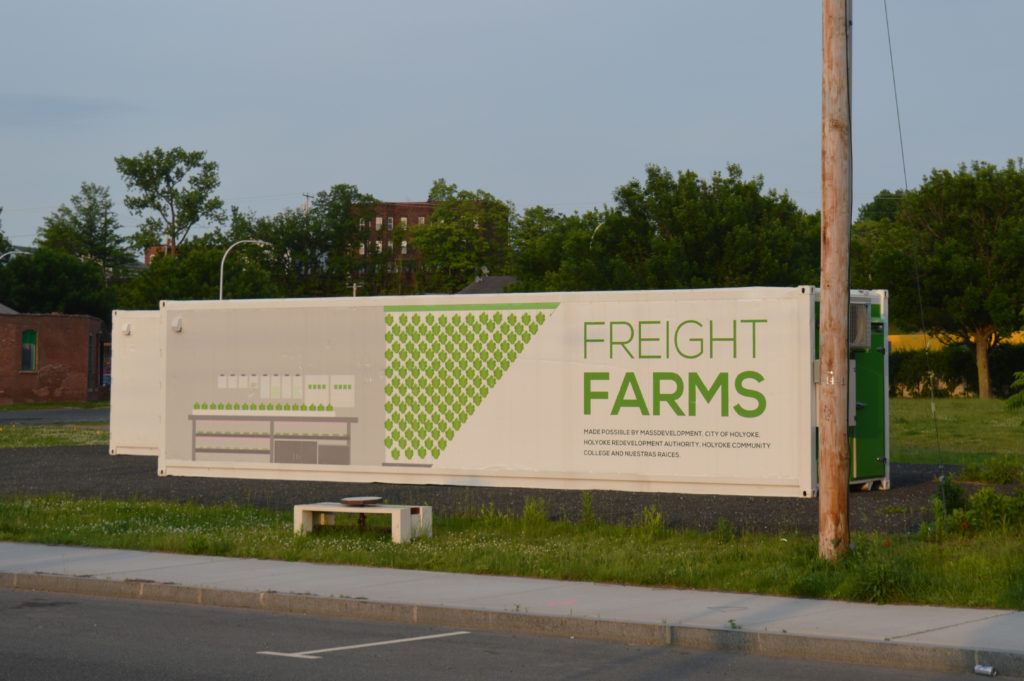
The History Of Container Farms
Container farms are a new concept. The first examples were created over a decade ago, utilizing vertical farming and controlled environment agriculture to grow to produce year-round in any environment.
A company started the first container farms under the name Freight Farms in 2010, and since then, many new companies have followed the same idea. Freight Farms creators were looking for a scalable solution to urban agriculture and turned to commonly used shipping containers to create an all-in-one farm system.
While Freight Farms might have been the first to use a shipping container farm, other companies have sought to perfect the idea of container farming, from start-ups to DIYers, and even Elon Musk’s brother, Kimbal Musk, is getting in on the action.
Since container farms have become more common worldwide, people have started integrating them into local grocery stores and restaurants, making them an authentic farm-to-table experience in an urban environment.
Container Farms Are Made From Easily Accessible Materials
One of the benefits of container farms is that they are a truly sustainable form of food production. They use common materials and repurpose old shipping containers to grow produce without the need to build a new building.
Using shipping containers offers many other benefits, which will be discussed later, and means that manufacturers and DIYers have the same base. This can reduce total costs and provide an accessible platform for urban growers while reusing a resource from the trillion-dollar shipping industry.
Most farmers opt for a standard 40′ x 8′ x 8.5′ container, one of the most common sizes used in the shipping industry and offers a large enough footprint to grow thousands of pounds of produce a year. These containers can be outfitted to produce the same amount of greens as 1-4 acres of conventional farming methods, thanks to efficient vertical farming methods.
The systems inside are made from everyday materials, including PVC piping, shelving or vertical towers, totes, and highly efficient LED lighting solutions such as the Dimlux Xtreme Series to save energy while maximizing yield.
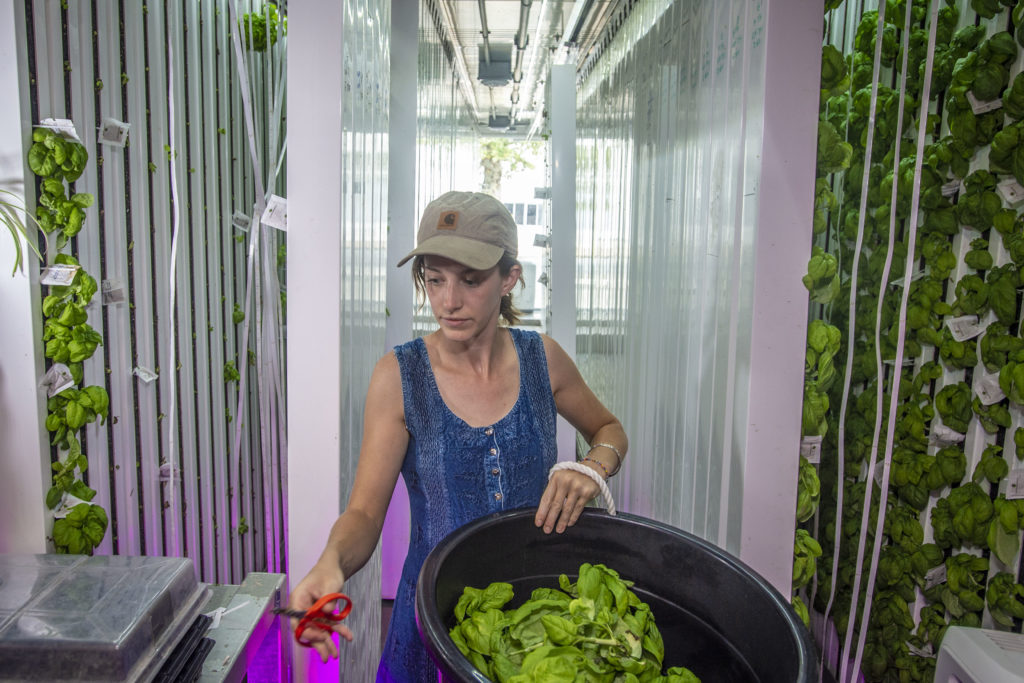
What Can You Grow In Container Farms?
Freight farms can grow a surprising variety of crops, including lettuce, leafy greens, herbs, microgreens, flowers, and even gourmet mushrooms. The best part is that you can mix and match what you are growing to determine consumer wants and tap into niche markets.
Hydroponic container farms are the most popular choice due to their ease of use and efficiency in using minimal water and electricity. Using vertical hydroponic towers, you can grow over 1000 heads of lettuce per week, the equivalent of at least 5000 side salads. Yields from other crops will vary significantly, but thanks to the controlled system, the yields will be consistent year-round.
Other methods of growing in container farms include aquaponics, meaning that in addition to any of the greens above, you can also produce fish. Most commonly used are tilapia since they make plenty of waste and can survive in most conditions.
Mushrooms are also becoming a common crop for shipping container farms, and while they aren’t a plant, some growers section off part of the container to grow alongside leafy greens. Mushrooms produce CO2 while fruiting, which can help speed up the growth of your plants and increase their size.
Container farms are not limited to growing food for people but can also be used for animal feed. Most commonly grown to supplement animal feed is what is known as fodder, or sprouted barley seeds. These container farms rely simply on water and lighting and can grow enough food to feed, significantly cutting down on feed costs.
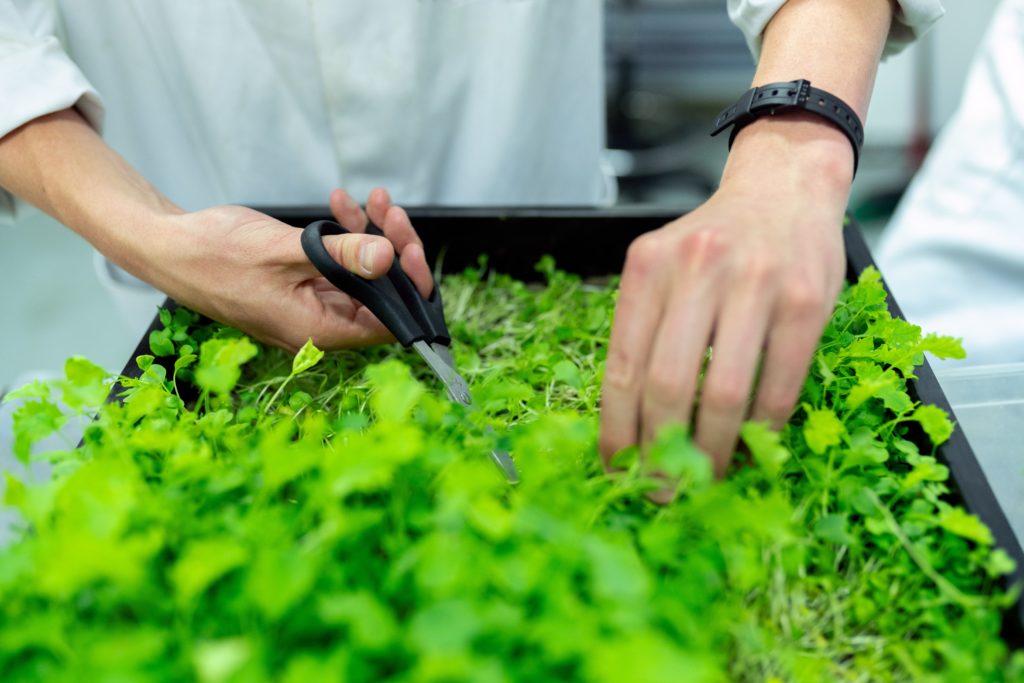
Container Farms Offer Fresh Produce Any Time, Any Place
Container farms are easy to insulate and implement environmental controls to grow high-quality produce anywhere. From New York City to the Middle East, container farms mean year-round, fresh produce for consumers.
Shipping containers only require flat ground and 320 square feet of growing space. This means a compact hydroponic farm can be dropped just about anywhere and produce enough food to supply 2-4 restaurants or provide fresh produce for a grocery store.
Restaurants and grocery stores are the two most common buyers of produce from container farms, thanks to the low shipping costs and the food’s freshness. This can be a major selling point in having the freshest produce available for both businesses.
Urban farms are becoming more widespread using indoor farms are becoming the norm due to limited space and often a less than ideal growing environment. With container farms, it is easy to get the benefits of indoor farming while not giving up valuable building space in an urban setting.
If you’re looking for an environmental controller that will save 50% of the energy associated with lighting, the Dimlux Maxi Controller will do all that and more.
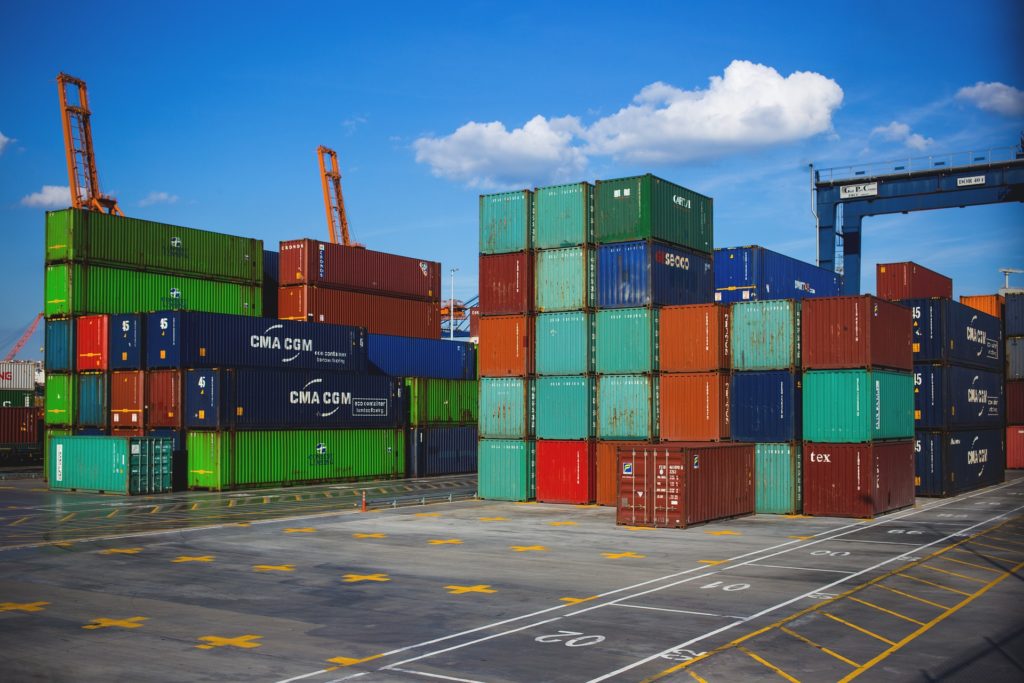
The Added Benefit Of Being Modular And Portable
The modular nature of shipping containers makes them great for farms. Shipping containers are stackable and arrangeable with the right equipment, meaning that in 640 square feet, you can stack 16 units or the equivalent of up to 32 acres of traditional farmland in a small area.
Since each farm is its compact package with everything you need inside, you can choose a different layout for a different crop for each one. This offers producers the ultimate flexibility when expanding operations to choose a layout that works best for their needs.
The other benefit of building on the base of a shipping container is that if you need to move one, it could not be easier, relatively speaking. While moving a 40′ shipping container isn’t something you could do with a pick-up truck, shipping containers are designed to be transported and can be loaded onto a semi truck.
Semis can take a shipping container farm anywhere in the country, and freighters ship these containers across the ocean all the time. For both production reasons and if you need to move a farm, these attributes save time, money, and energy and truly means that you can take a freight farm anywhere.
Are Container Farms Profitable?

Now, if you’re anything like me, you are skeptical about container farms at first glance. Can you make any money out of such as small space? And are container farms really practical? While you aren’t going to become an instant millionaire, container farms can be an excellent part-time or full-time business.
Your container farm’s profitability will depend on your local market, what you’re growing, how you manage costs, and how much you spend on the farm. As a general answer, yes, these farms can be profitable and replace your full-time job, but there are some caveats.
The most important part of making a container farm profitable is selling the produce at a premium for local, sustainable produce rather than attempting to compete with wholesale prices. This is more in line with organic than conventional growing and occupies a niche market at this time.
Maximizing the productivity of your labor is also necessary to turn a profit. Planting, harvesting, and delivering will take a lot of time, and any time saved will increase your profitability. Whether it is just you or you have several employees, working efficiently will go a long way towards making a profit.
How Much Does A Container Farm Cost?
The most challenging aspect of turning a profit with these container farms is the high up-front costs for the farm itself. The payment plans for container farms can be a significant expense and make it challenging to turn a profit even in the best areas.
The cost of a container farm can range anywhere from $50,000 for a simple turnkey solution to $150,000 for Freight Farm’s top-of-the-line model. Building one yourself can be considerably cheaper, and depending on what equipment and deals you can find, you can create one for under $20,000 to get started.
While you do pay a higher premium for pre-built freight farms, you can be confident that they are well planned, have undergone testing, and come with a warranty. Depending on your experience with construction, electrical, plumbing, HVAC, hydroponics, and vertical farming, DIYing your first one might be a huge undertaking.
Closing Thoughts
Container farms offer an urban agriculture solution in a compact, portable, and highly efficient package. They can produce food equivalent to many times their square footage using vertical hydroponic systems. They can be outfitted with climate control technology to create the perfect growing environment and grow food year-round.
The only downside to freight farms is their high upfront costs and niche market roles. Their roles are currently limited, but you may see a stack of container farms on every block in the future. After all, growing local fresh food everywhere would be a pretty good future.
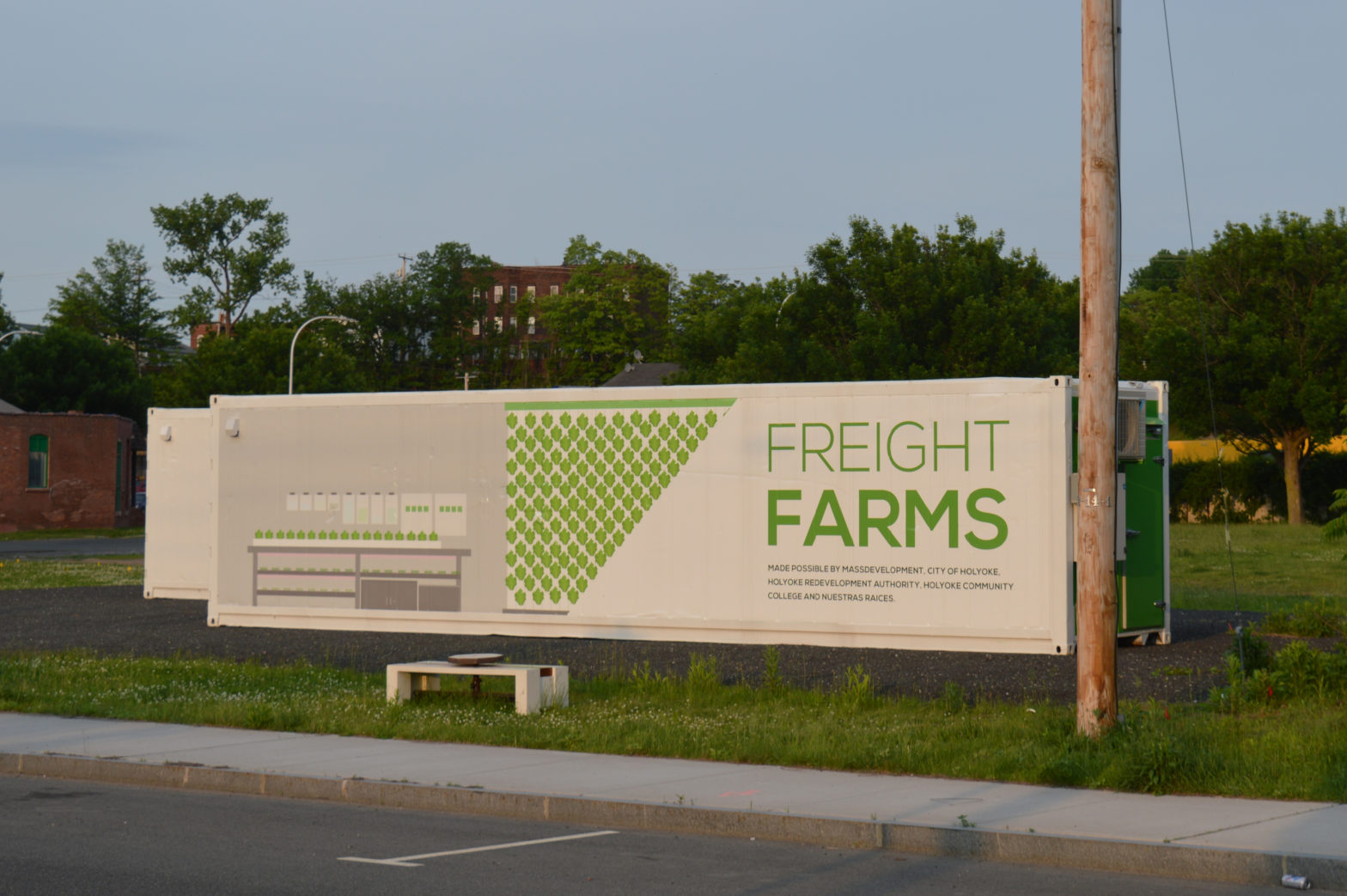
This is truly an amazing concept, using a reusable resource such as a shipping container to grow produce effectively with the power to be portable is ingenious. Great article.